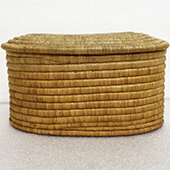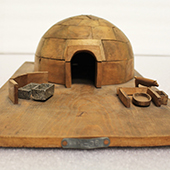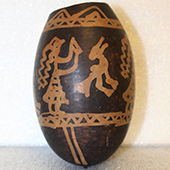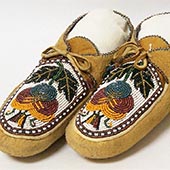Globalization
Jamaican, Jamaica
Moravian converts were very aware of their connections to the larger world. Through the Church, they had access to people, places, and ideas that were inaccessible without the influence of the missionaries. Moravian missionaries arrived in Jamaica in 1754 to proselytize among the enslaved African population. Their message found a receptive audience, though the missionaries were frequently opposed by European planters. A large community of black and white Moravians flourished by the end of the 19th century.
By the beginning of the 20th century, advances in travel and communications brought distant lands together in new ways. Leisure tourism was a growing past-time that changed how Jamaican Moravians interacted with the world. Tourists wanted to bring back souvenirs to recall their experiences in new lands, just as earlier missionaries sent back artifacts to demonstrate the unique cultures in their mission fields.
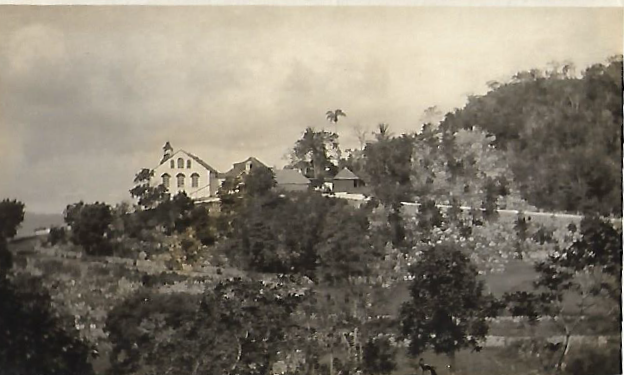
Handicrafts had long been a focus of Moravian missionary teaching as they were believed to contribute to spiritual and moral development. These same handicrafts took on a new life in the tourist trade as a source of economic development. Rather than keep local practices for themselves, Jamaican Moravians produced large numbers of crafts for sale. These objects spread throughout the world in the suitcases of tourists, though their connection to Moravian missionaries was likely unknown.
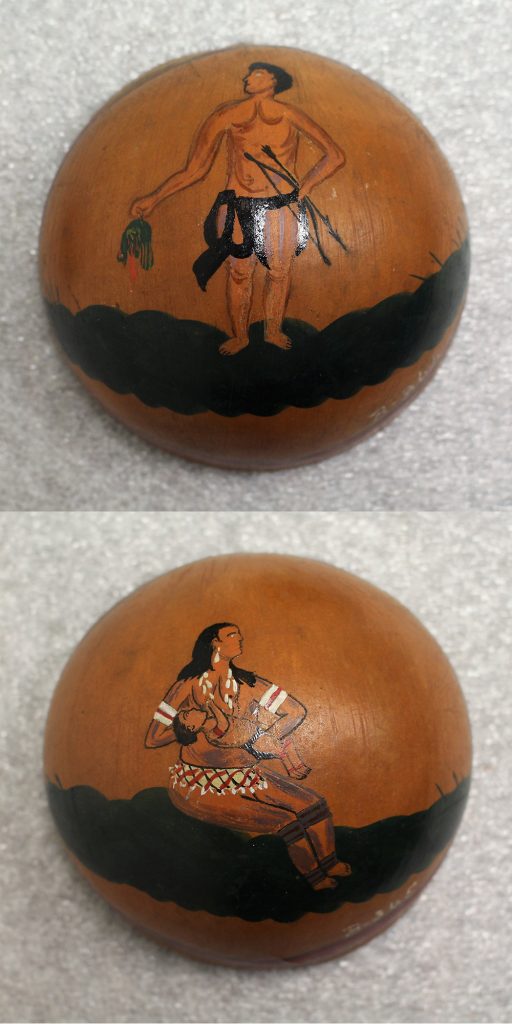
Bowls (1984.E.0451)
These painted bowls depict the indigenous Taino inhabitants of Jamaica before disease, violence, and slavery decimated their communities. Their removal from Jamaica and the broader Caribbean allowed for the expansion of plantations using enslaved African laborers. It is telling that the tourists visiting Jamaica in the early 20th century did not want souvenirs that depicted the history of the black artists who painted the bowls, but rather depictions of the Taino in romanticized poses.
Basket (1984.E.0535)
Small baskets were common souvenirs throughout the world. They are lightweight and portable enough to be brought along on travels, while also distinct enough between cultures to be a meaningful symbol of their origin. This miniature handled basket is constructed in a Euro-American style, but the materials are unique. The beads are actually tamarind and licorice seeds strung on metal wire.
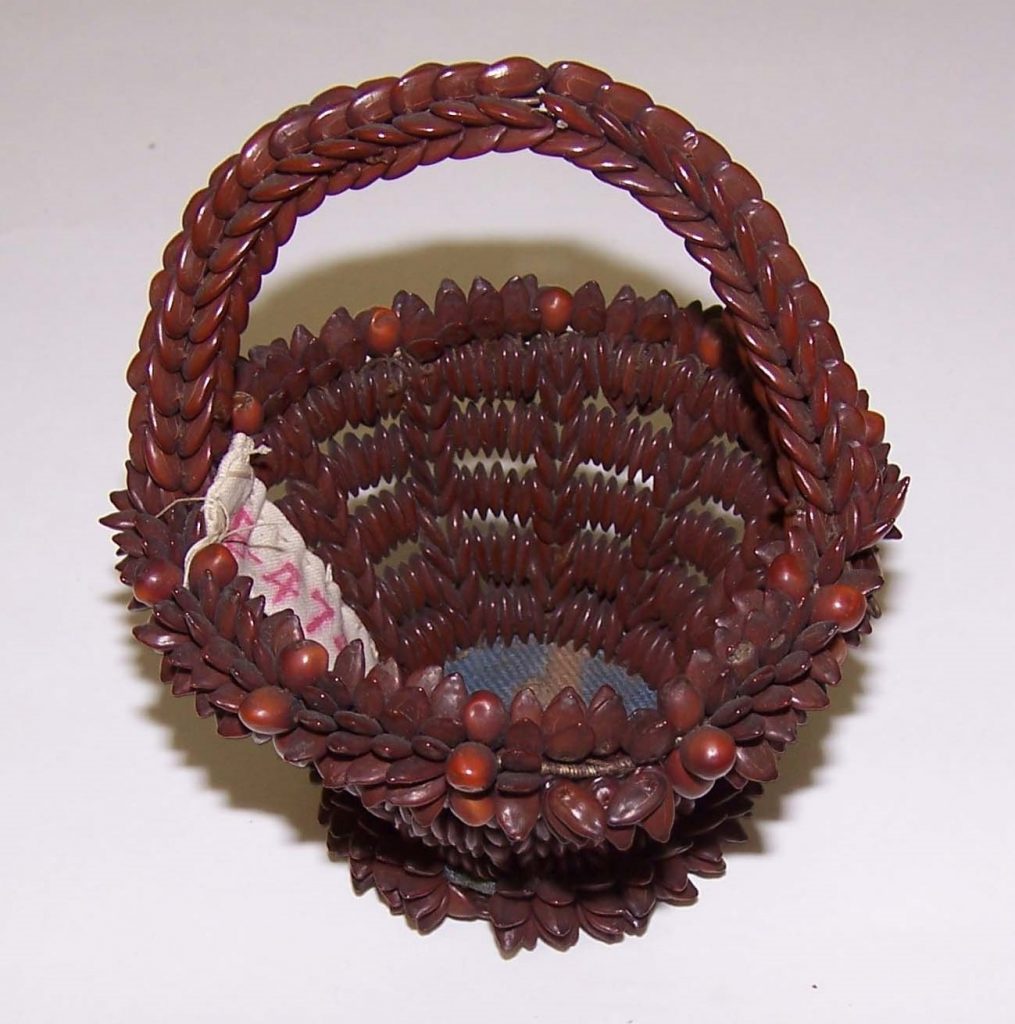
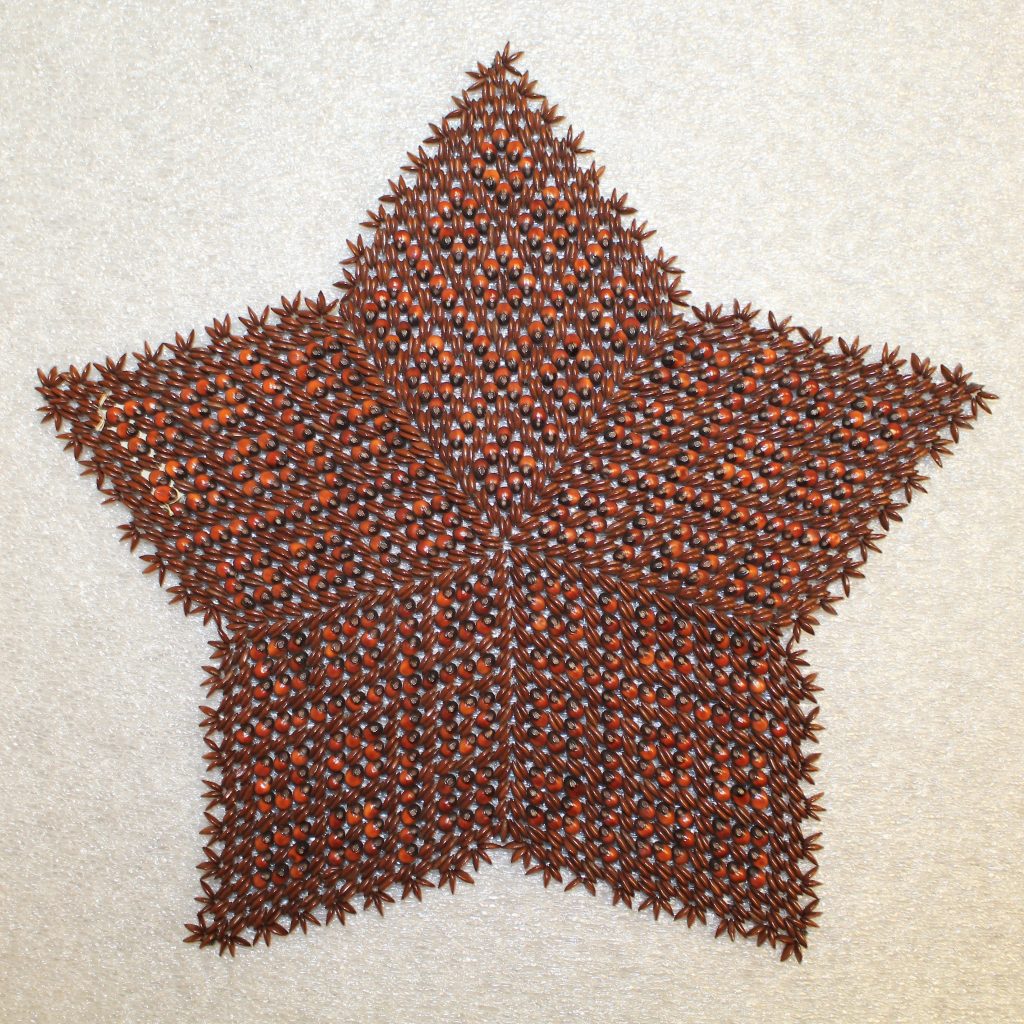
Mat (1984.E.0534)
Though not as distinct as the Moravian Star, the five-pointed Star of Bethlehem is a common symbol in Christianity. What sets this decorative mat apart, however, is its use of tamarind seeds. Tamarinds were first brought to the Caribbean by Dutch colonists. Tamarind seed handicrafts remain popular souvenirs throughout the region. This late 19th century mat is the earliest known example of the art form, giving it a possible origin in Moravian missions.
Explore the other sections of the exhibit below
